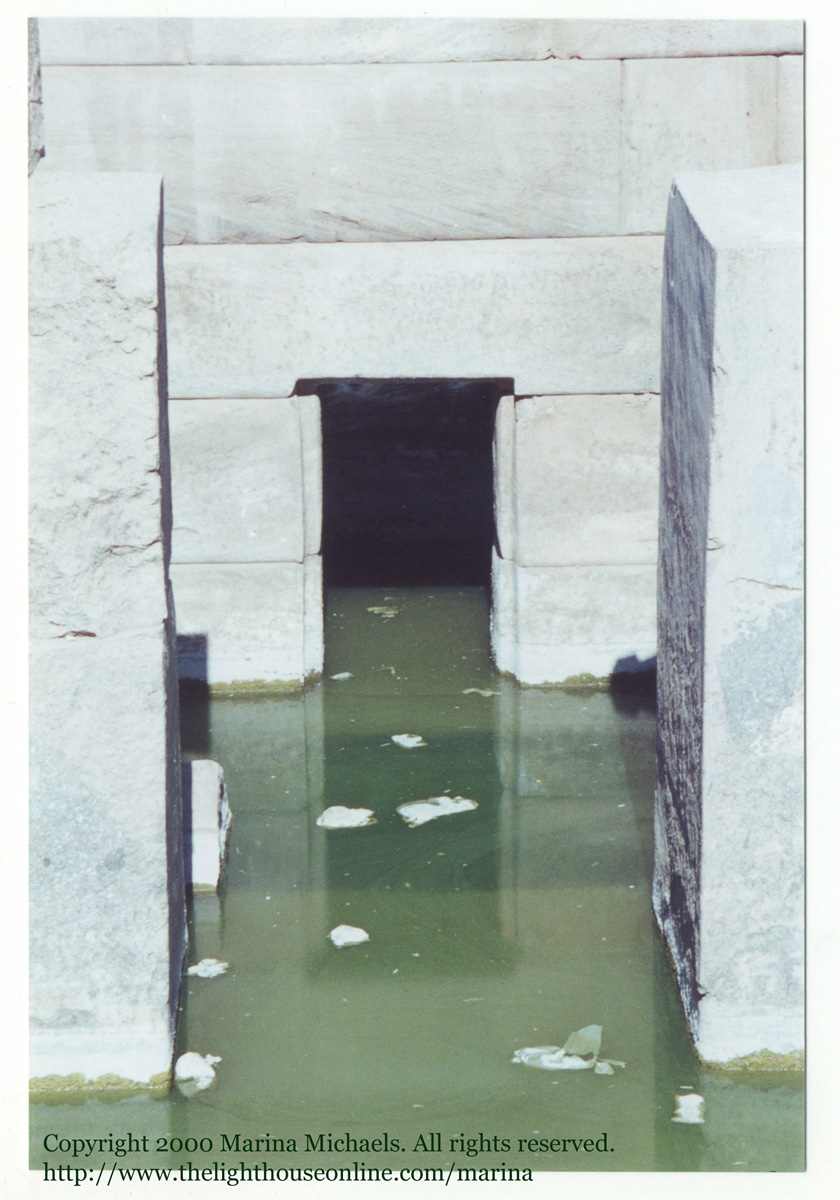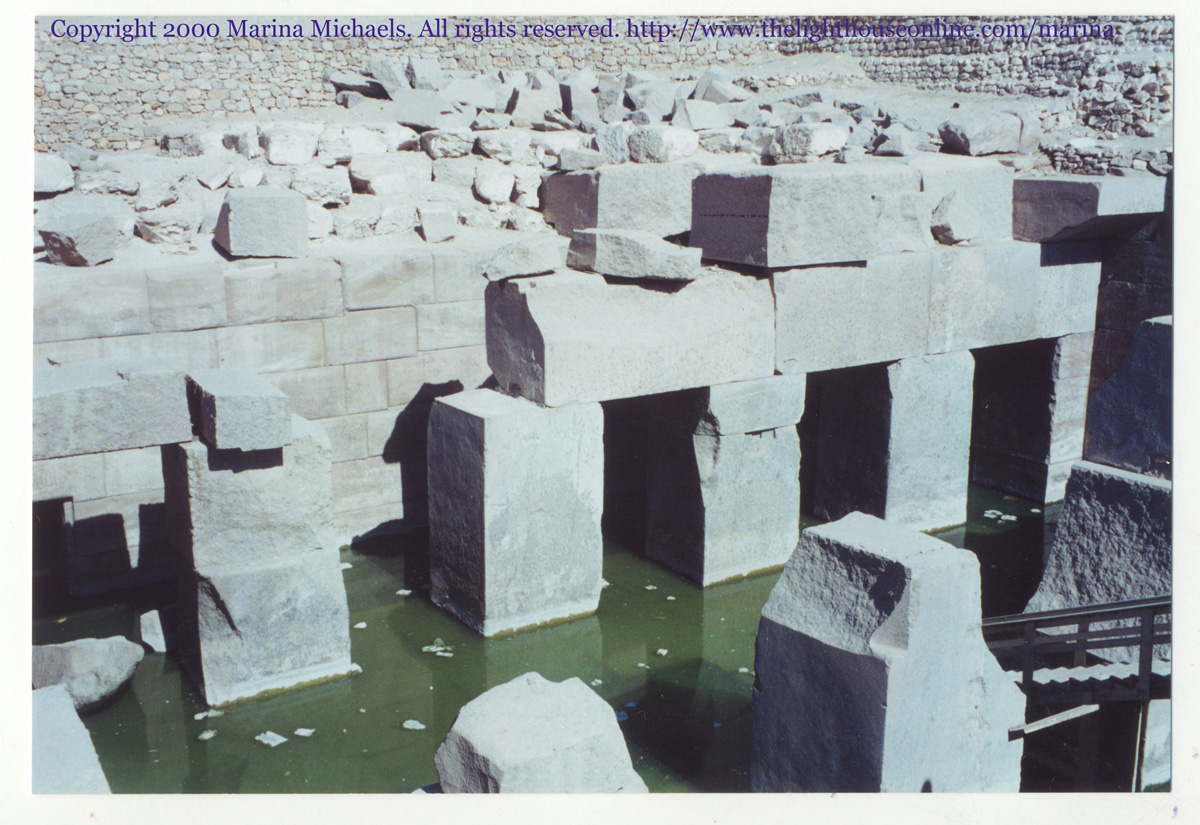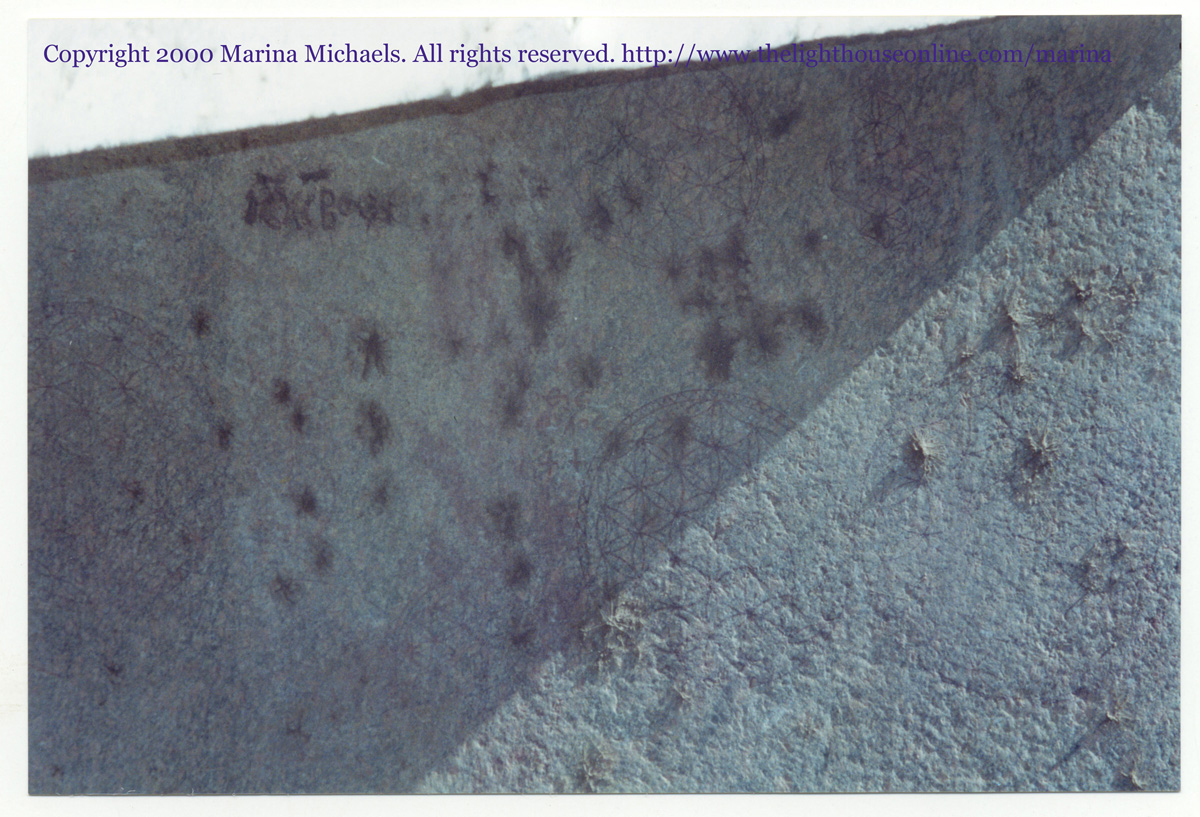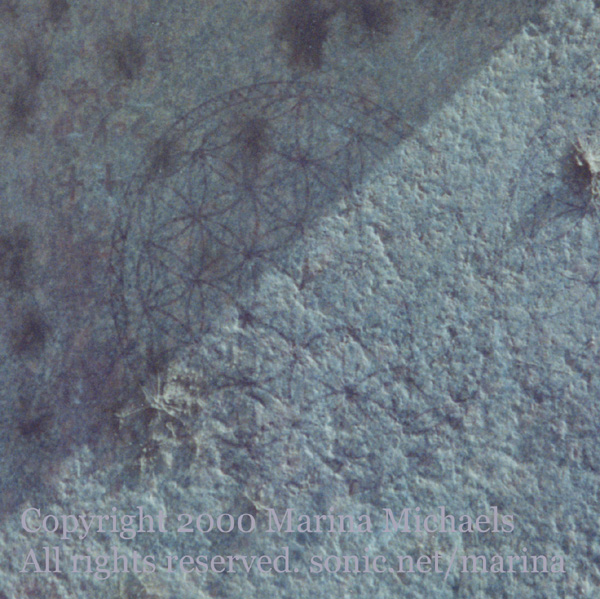The Osireion is a building unlike most others in Egypt. The architecture most closely resembles that of another anomalous structure, the Valley Temple in front of the Sphinx and near the Great Pyramids. It is my opinion that the Osireion was constructed by members of an advanced ancient civilization that I am calling Atlantis, mainly because I think it was the same as referred to by Plato by that name, though I think that Plato was a bit prejudiced against the Atlanteans and in favor of the proto-Greeks he speaks of.
Late Atlantean architecture was constructed of large, if not huge, simple, elegant blocks of stone. The term "monolithic" certainly applies. The Osireion is a good example of this kind of archtecture. This page is primarily devoted to displaying some photos I took of the Osireion so that you can see for yourself the kind of architecture I am talking about.
The Osireion
I had the great good fortune of being able to travel to Egypt in fall of 2000, going on a group trip arranged by Shamanic Journeys. One of the places we visited was the Osireion, and it instantly struck me as Atlantean.
The Age of the Osireion
I won't spend too much time going into the many excellent reasons for dating the Osireion as much older than the temple of Abydos that stands above it. However, I will cover a few of the reasons. (You can find a somewhat more in-depth discussion in this article on the Osireion.)
Our Egyptologist guide stated that geologists have found that the layer of earth above the Osireion gave the structure a minimum age of 18,000 years, because that was the age of what had accumulated on top. This seems to me that the age should then be pushed back from there, as the sides had to have been buried before the top started to accumulate, but perhaps the guide just didn't clarify his statement well enough.
An age of 18,000 years plus would certainly coincide with what the ancient Egyptians said of themselves, for the ancient Greeks reported that the Egyptians had records of their pharaohs dating back 18,000 years at the time, and that was over 2,000 years ago, making the Egyptian history more like 20,000 years before present.
Most conservative Egyptologists, however, date the Osireion as being much younger than that, as they do not recognize the entire span of ancient Egyptian history as covering more than a few thousand years, rejecting outright the records of the ancient Greeks. In fact, most archaeologists credit the Osireion to Seti I and his grandson, but this cannot be, as the temple being constructed by Seti I at Abydos when the Osireion was discovered is many layers of earth (50 feet) above the Osireion, and in fact, unlike any other temples in Egypt, the temple at Abydos takes an abrupt turn to accommodate the Osireion, which was discovered by Seti's people during the excavation of the later temple. The reason for attributing the Osireion to Seti is that his name and the name of his grandson are inscribed in many places, but of course an inscription can be added later, even much later, and that is my opinion of what happened. In fact, it was quite common for Egyptian pharaohs to stake their claim to earlier works and to write their names all over a building that was not constructed by them. The practice was so common that Ramses II, Seti I's son (and step-brother to Moses, I might add by way of an interesting historical tidbit) caused his name to be carved quite deeply to make it difficult to erase his name.
I can almost imagine the awe and excitement of Seti I and his people when they dug up this place. It must have been like having some of their ancient history, of which they had only heard stories from their priests, return to their lives. The Osireion was originally labeled a tomb even though there were and never have been any other tombs like it found anywhere else in Egypt or, for that matter, in the world, though buildings constructed in a similar way have been found.
Pictures of the Osireion
This section provides some photos I took while in Egypt in October, 2000. Links to these and more can be found in the right-hand column of this page.
The Approach to the Osireion
This image shows the stony approach to the Osireion (looking back toward the Temple at Abydos). The Osireion is 50 feet below the ground level of the temple of Abydos, which is right beside the Osireion.

The Osireion's Pillars
The next photos give an idea of the Osireion's architecture. Our Egyptologist explained that the water table has risen and has made some parts inaccessible.


The Flower of Life
Much has been made of the geometric construction called the Flower of Life (also known as Metatron's Cube). On at least one pillar in the Osireion, carved in a manner that is not yet explainable, are a number of these flowers of life.

Here is a closeup of one of the flowers of life.
